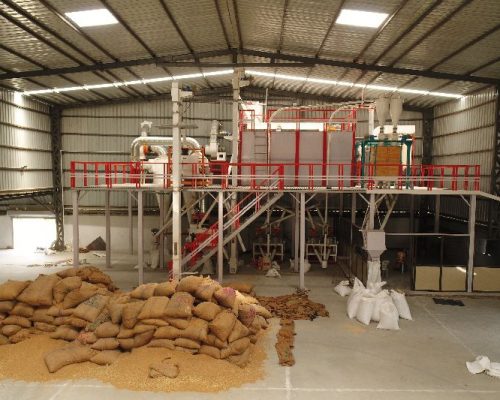Introduction
Project Report Of Wheat Grading Plant is as follows.
A facility created expressly for the grading, cleaning, and sorting of wheat grains is known as a wheat grading plant. By ensuring that the quality and uniformity of wheat grains satisfy particular criteria and regulations, it plays a significant role in the agricultural and food processing industries.
Numerous factors, including grain size, moisture content, protein content, foreign matter, and other quality qualities are assessed throughout the grading process. Receiving and storing the harvested wheat is the first stage in a wheat grading factory. From trucks or other transport vehicles, the grains are carefully unloaded and put into silos or bins for storage. To avoid contamination or spoiling, proper storage conditions are maintained, including temperature and humidity control.
The wheat goes through a number of cleaning procedures before it is ready for processing in order to get rid of contaminants including dust, dirt, stones, and other foreign objects. To guarantee the end product’s quality and purity, cleaning is essential. For effective cleaning, a variety of devices are employed, including screens, air aspirators, magnetic separators, and gravity tables.
The wheat grains are sorted based on a number of quality criteria in the grading area after being cleaned. Grading equipment using optical sensors and sieves separates the grains based on their size, shape, colour, and texture. Grain homogeneity, which is necessary for reliable milling and baking performance, is achieved by this technique.
The grading facility may also run tests to find out how much protein and how much moisture are in the grains. These tests are essential because they have a direct impact on the wheat’s quality and fitness for its intended purpose. To carry out these tests properly and effectively, modern grading operations employ cutting-edge technology and equipment.
The wheat grains are often bagged or packaged for delivery to mills, bakeries, or other food processing companies after they have been cleaned and graded. In order to retain the quality of the packed wheat until it is sent to its destination, the grading factory may additionally offer storage facilities.

Benefits Of Wheat Grading Plant
Quality Control: Wheat grading plants are critical in preserving and insuring the quality of wheat grains. These facilities eliminate contaminants and guarantee that only high-quality grains satisfy the required requirements through meticulous washing, sorting, and grading operations. This quality control is critical for generating consistent, safe, and dependable wheat-based goods.
Uniformity: Grading plants aid in the uniformity of grain size, shape, and other quality qualities. This is critical for consistent milling and baking performance. Uniform grains help mills to create flour with uniform texture, resulting in higher-quality baked items such as bread, pasta, and pastries.
Standardisation: Wheat grading factories adhere to certain grading standards and restrictions issued by industry organisations or government authorities. These guidelines ensure that the grading process is transparent, fair, and uniform among wheat batches. Standardisation gives buyers and sellers confidence in the quality and value of the wheat being exchanged.
Marketability: Grading plants increase the marketability of wheat grains. Wheat that has been graded and labelled appropriately attracts buyers that have precise needs for their final goods. Grading gives information on grain quality, protein content, and other critical properties, allowing purchasers to make informed judgements and pick wheat that best meets their needs.
Market Potential Of Wheat Grading Plant
The global wheat grading plant market is estimated to be valued at approximately USD 900 million in 2021 and is expected to grow at a compound annual growth rate (CAGR) of 5.6% from 2021 to 2028.
Due to a variety of variables, the market potential for wheat grading facilities in 2023 is high. For starters, there is a growing need in the food business for high-quality wheat grains. Wheat-based items such as bread, pasta, and pastries are in high demand due to the growing worldwide population and changing nutritional tastes. Wheat grading plants are critical in satisfying this need because they provide constant quality and consistency in the grains, making them more appealing to mills and food processing industries.
Food safety and quality requirements are becoming increasingly important. Traceability and transparency in the food supply chain are becoming increasingly important to consumers and regulatory organisations. Wheat grading plants are an important quality assurance process that ensures grains fulfil certain criteria and laws. This boosts customer trust in the safety and quality of wheat-based goods.
Project Report Sample On Wheat Grading Plant
Need Help?
Create 100% Bankable Project Report

